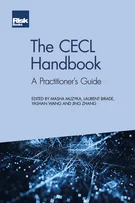The Arab Spring: Insights for Political Risk Analysis
Therese Feng
Preface: Two economists’ views on the bank-sovereign linkage
Introduction
Assessing Country Risk: A Practical Guide
Sovereign Risk: Characteristics, History and a Review of Recent Research
The Arab Spring: Insights for Political Risk Analysis
The Eurozone Crisis: The Forgotten Risks of Private and External Debt
How the Eurozone Crisis Became a Banking Crisis, and the Risk of Japanisation
The Changing Dynamics of Country Risk
Capital Flight as a Political Risk Indicator
Debt Crisis Indicators of Emerging Markets versus Eurozone Economies
How Much Economic Capital Could European Banks Save? The Case for Optimal Sovereign Risk Allocation
Fixing Fundamental Flaws in Probabilistic Country Risk Models
Have We Learned the Country Risk Management Lessons of the 1997 Asian Financial Crisis?
Using Systems Thinking to Enhance Country Risk Assessment
Approaches to the Quantification of Country Risk
Stress Testing Across International Exposures and Activities
In a new century already marked by major political turmoil, the Arab Spring was an unprecedented wave of indigenous popular uprisings and regime challenges in a region of states long regarded as trapped in static authoritarian regimes. Beginning with Tunisia in December 2010 and then rapidly spreading across the Middle East and North Africa (MENA), the Arab Spring uprisings were unparalleled in their scale, cross-sector participation and unpredictability, posing an extraordinary challenge to legitimacy and containment for existing regimes.
The causes and course of these events has been much discussed. In many MENA countries, a lack of economic opportunity and political access fuelled potent dissatisfaction. Their populaces had endured more than a decade of stagnant real per capita income growth, high and rising unemployment rates particularly among the youth, especially the educated, and an increasingly tenuous position for the non-professional middle class and rural poor (UNDP, 2011; Breisinger et al., 2011). Protests pointed to dysfunctional governments unable to provide basic social services, widening income disparities and increasingly egregious corruption.11For instance
Copyright Infopro Digital Limited. All rights reserved.
As outlined in our terms and conditions, https://www.infopro-digital.com/terms-and-conditions/subscriptions/ (point 2.4), printing is limited to a single copy.
If you would like to purchase additional rights please email info@risk.net
Copyright Infopro Digital Limited. All rights reserved.
You may share this content using our article tools. As outlined in our terms and conditions, https://www.infopro-digital.com/terms-and-conditions/subscriptions/ (clause 2.4), an Authorised User may only make one copy of the materials for their own personal use. You must also comply with the restrictions in clause 2.5.
If you would like to purchase additional rights please email info@risk.net





